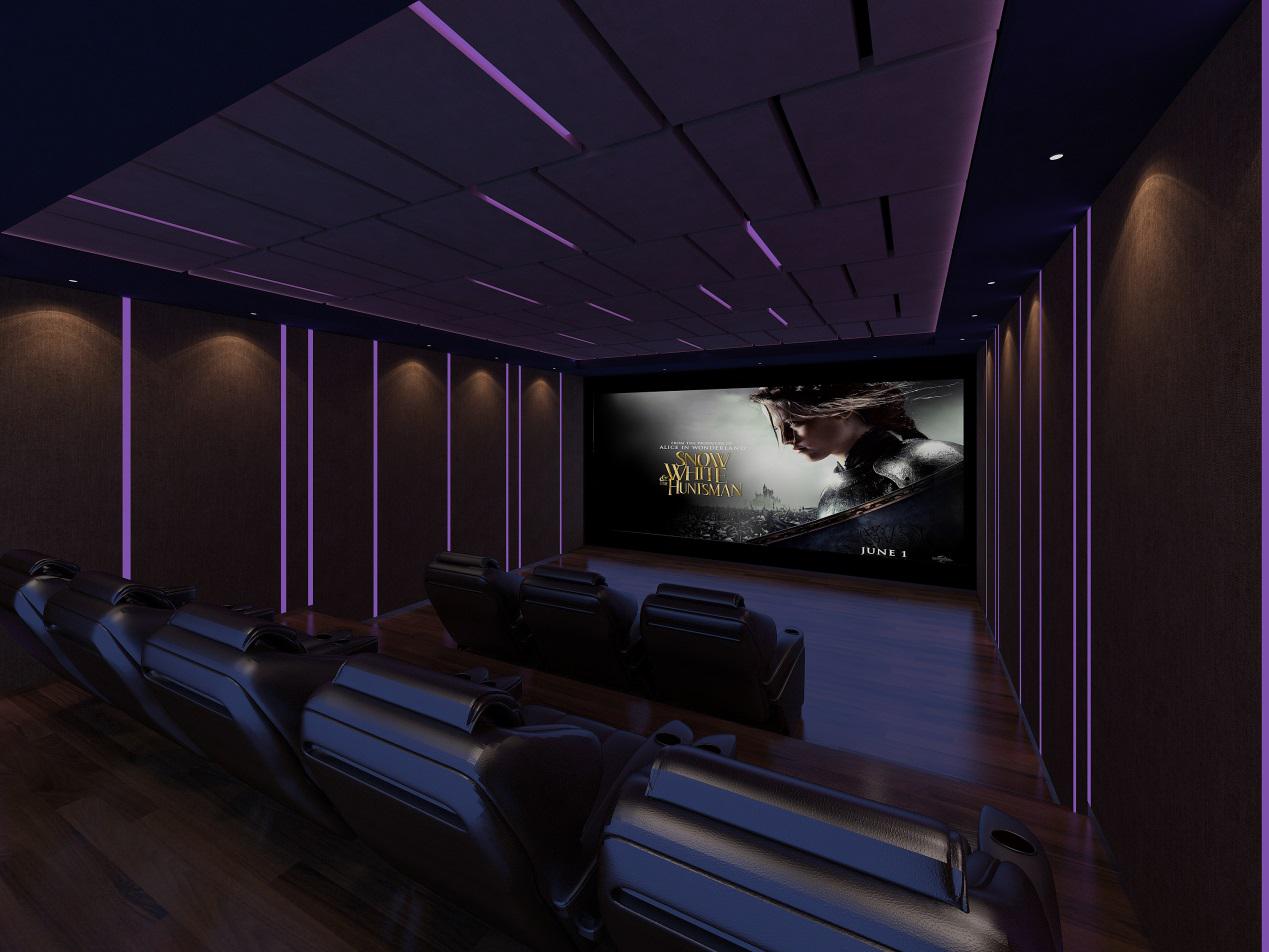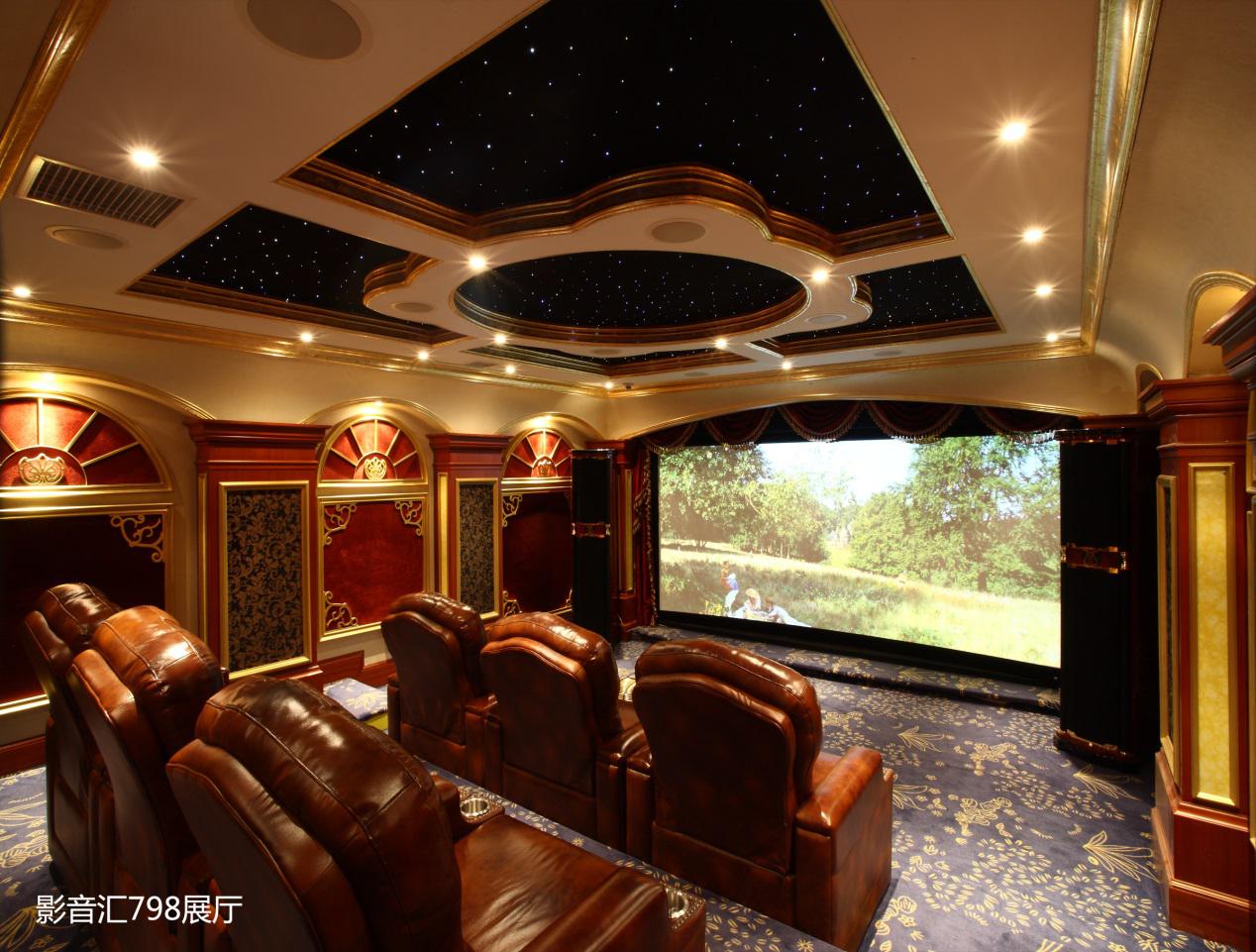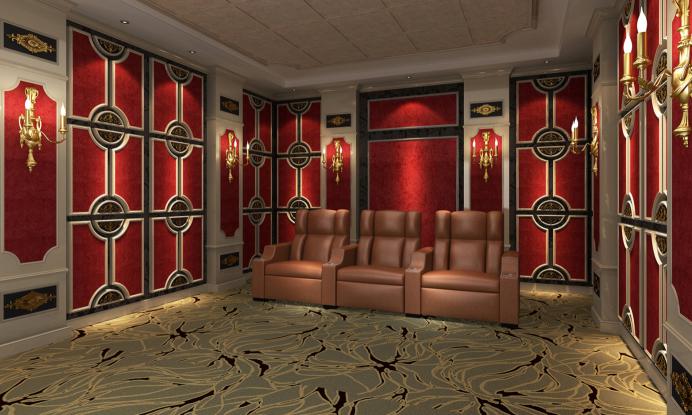With a set of tens of thousands or more than a dozen home theater equipment, it is amazing that after the formation of a few thousand dollars is the effect of equipment, this home theater also how to? How can this life continue?

In fact, acoustic design is very important in order to get the best results from your expensive or inexpensive home theater equipment. If the design is unprofessional, or there is no professional acoustic design at all, it is very likely that the aforementioned results will appear. Today, we asked the senior designer Mao Defang of AVIC to talk with everyone about the common misconducts in the process of designing home theaters. The main issue is the problem of audiovisual space conditions and how to solve them one by one.
Listening environment size and ratio
Speaking of the listening environment, Mao Defang said that the best shape of the listening environment is a rectangle, and the best area is about 18 to 40 square meters. The ratio of the height, width and length of the room is preferably in accordance with the golden rule, such as 1:1.25:1.6, 1:1.6:2.5 or 1:2.5:3.2. The size of the square or the side is exactly twice the room on the other side, the room is too high, and it is not suitable for the audio and video room. If you must use such space as a video room, you can improve the room size by installing, adjusting ceilings, adding wall panels, and making wall panels. At present, it is very common to use a wooden cabinet or a wooden board as a compartment to transform the length, height and height ratio of an audio-visual room into an ideal situation in order to achieve the best results.

Sound-absorbing material
In general, thick sound-absorbing materials are good for absorbing low-frequency sounds, and thin materials are good for absorbing high frequencies.
Carpets are the most common sound-absorbing materials. Carpets have a pronounced absorption effect on medium and high frequencies, and have a low absorption of low frequencies. If the carpet area is too large, the details of the sound will be lost. Hanging curtains and hollow panels are also common sound-absorbing materials. In addition to the sound absorbing function, the curtain can also prevent part of the sound transmission. The thicker the curtain, the greater the volume. With wrinkles, the greater the area of ​​the curtain, the more pronounced the sound absorption is. Based on the different requirements for listening, the degree of expansion of the curtain can be adjusted to control the absorption of high-frequency sounds. Hollow plates refer to all kinds of siding boards, wooden floors with grids, and furniture placed indoors, which can play a role in absorbing medium and low-frequency components.

Diffusion material
Mao Defang said that if the space conditions and sound absorption conditions are doing very well, but the sound still sounds a bit harsh, there may be no proliferation measures. In simple terms, proliferation is smoothing the original ups and downs. If the video room does not spread, the sound in different locations or frequencies in the room will not be even, and some frequencies or locations will have particularly strong sounds, while others will be weak, and the flat frequency response from the speakers will be disastrous.
Any convex surface has the ability to diffuse sound waves. Cylindrical, triangular, hemispherical, polyhedral, pyramidal and other objects are all good diffusion materials, but it should be noted that the material of the diffuser should be made of materials with a large specific gravity and a certain rigidity. Such as concrete, plaster masonry, marble, granite. If wood is used, solid hardwood should be used to avoid casting as much as possible with gypsum. Although the production cost is low, it will produce metal sound staining, which is detrimental to timbre.

Noise reduction
The noise in the space is inevitable, and the best way to eliminate noise is to adopt sound-absorbing measures. To achieve a perfect listening environment, sound insulation measures must be provided.
The first is the wall. Heavy and thick structures should be used to increase the ability to isolate air. Double walls can also be provided, such as installing a sound-absorbing panel inside the wall at a certain distance from the wall, which is also a double wall.
Followed by soundproof doors and windows. This is also the key to noise reduction. Increase the weight and thickness of the door to improve sound insulation. If a double door is set and the sound absorption material is filled in the middle, the sound insulation effect will be more pronounced. The window of the audio-visual room can be transformed into two or even three-layer glass windows. The glass and the frame are connected with special rubber strips. The sound insulation performance of the audio-visual room can be comparable to a 24-cm-thick brick wall effect. In addition, it is also possible to paste sealant strips at the door seams and window seams. This is the simplest method of sound insulation.
Noise from upstairs and downstairs can be isolated by installing suspended ceilings and carpets. Carpeting also prevents sound reflections caused by too many smooth surfaces in the room.
If you want to reduce noise, vibration isolation is also a must. There should not be chamber ceilings or open cabinets in the AV room because they are very easy to resonate with some frequencies in the music. At the same time, in order to avoid trembling sound, audio and video indoor best use of solid wood and composite sheet furniture, a variety of items also have to stabilize, close.
Of course, home theater equipment is good, the effect is not good, looking for professional acoustic designers, looking for professional audio and video companies to give you advice on that is the best policy!
100W Portable Solar Panels,Mini Solar Panel,Watt Solar Panel,Portable Folding Solar Panel
Guangzhou Fengjiu New Energy Technology Co.,Ltd , https://www.flashfishbatteries.com